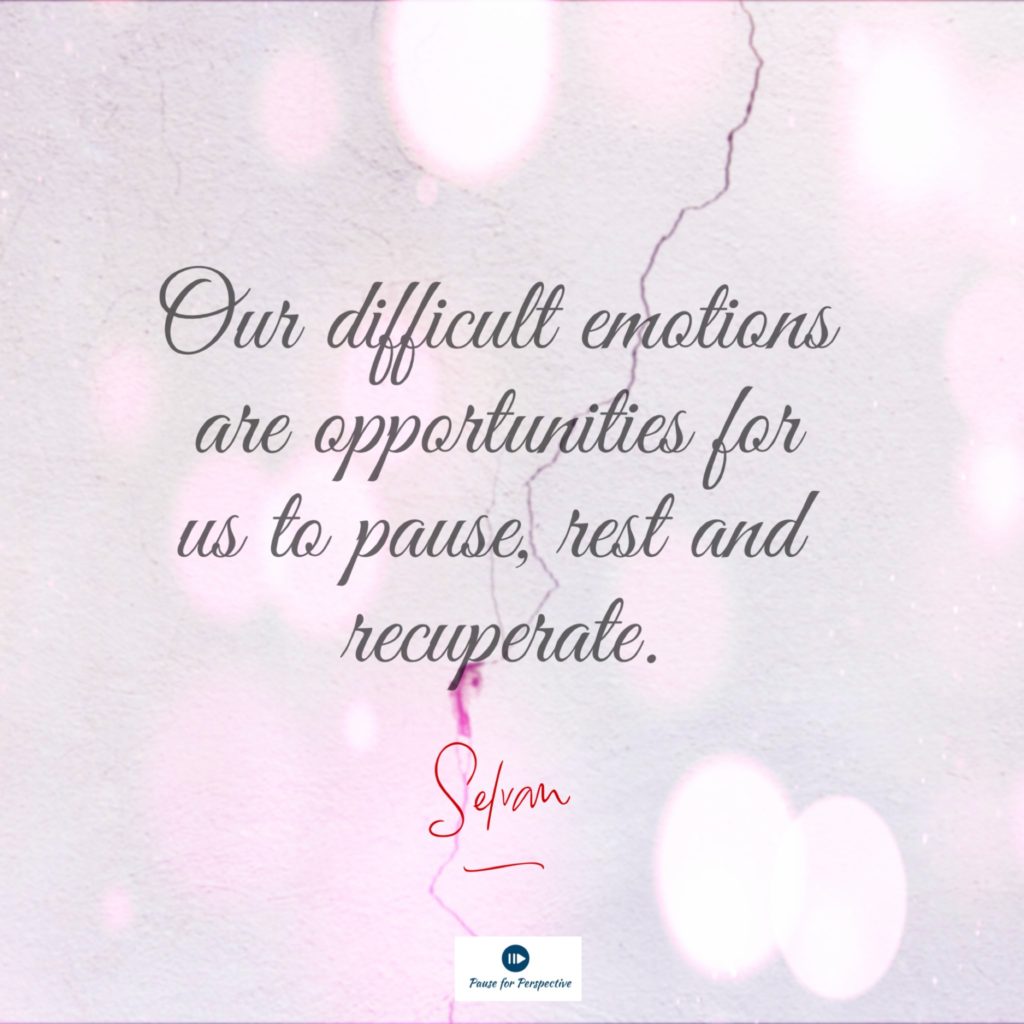An Energy psychology perspective.
Grief or Sadness or Depression is an electro-magnetic vibration of a certain range of frequency that is felt in our emotional mind. This includes feeling aloof, anguished, apathetic, beat, bewildered, bitter, broken hearted, confused, dejected, detached, disappointed, discouraged, disgruntled, disheartened, dismayed, embittered, forlorn, gloomy, hurt, indifferent, lonely, miserable, morose, mournful, perplexed, pessimistic, puzzled, reluctant, sensitive, skeptical, sorrowful, tepid, troubled, unconcerned, unhappy, wistful, withdrawn, woeful and worried.
The physical body experiences this emotional vibration by responding with feeling cold, dull, exhausted, fatigued, heavy, lazy, lethargic, numb, passive, sleepy, spiritless, tired, uncomfortable, unsteady and weary.
All of these are normal human experiences and we can learn to simply stay with them or even enjoy experiencing them. The only problem with this emotion is that it is not socially or politically right to be experiencing them. You are meant to be happy and smiling all the time and so you are expected to push this emotional feeling underneath and cover it up with a smile and outward show of happiness.
Why did nature or evolution create this emotion of sadness? What is the need or purpose? Grief or sadness is a powerful bonding emotion; you get deeply bonded with others in your family or community when you experience this emotion together. Our difficult emotions are opportunities to pause, rest and recuperate.

The simple experience of the emotion of Grief, sadness, depression then turns into a suffering because of our response of not wanting to experience it. It is not the emotion that causes our suffering but our continued reaction of running away or hiding or covering it up that leads to hardening and deepening of the suffering leading to clinical depression or at its extreme, suicidal tendencies.
You can begin to feel the sadness emotion due to physical tiredness caused by exertion or lack of physical rest. You can also simply absorb it due to empathy by simply being near another person who is experiencing it. Or you can simply begin the emotional feeling of sadness by thinking about your past. Irrespective of which of these three originally triggers the sadness, it automatically loops in the other two and a loop is formed.
For example, if you are physically tired, you end up thinking of the past and start feeling sad. If you started feeling sad due to absorbing the sadness energy with empathy, you end up thinking of your own past and also start feeling tired physically. Each one feeds the other and it goes in an endless loop leading to extreme suffering.
What is the best way to deal with this emotion then? The first step would be to acknowledge that the emotional mind is experiencing sadness and it is ok to feel this way. We are holding an intention of noticing it instead of becoming it. It is useful to understand that sadness or any of its above associated emotions are merely electromagnetic vibrations and can be grounded and released into the earth. The restless vibrations created by our thinking mind cause our natural grounding connection with the earth to disconnect. The best way to deal with sadness therefore is, to regain our state of groundedness and just be present and grounded while allowing yourself to experience the emotion. Conversely the worst way to deal with it is to keep on thinking and allowing our mind to be in the past.
It is important to remember that the practice of acknowledging our difficult experiences and holding an intention of noticing it is really a practice. We have to keep coming back to doing this again and again because the thinking mind has a strong grip on our presence due to habit based autopiloting when uncomfortable. I will write more about what the practice of acknowledging and noticing our experiences really is in a future blog. In the meanwhile, please read my previous blogs about Presence and Grounding to learn more about grounding and do join my online-guided meditation practice to help make acknowledging and noticing our emotional lives an intentional journey.
